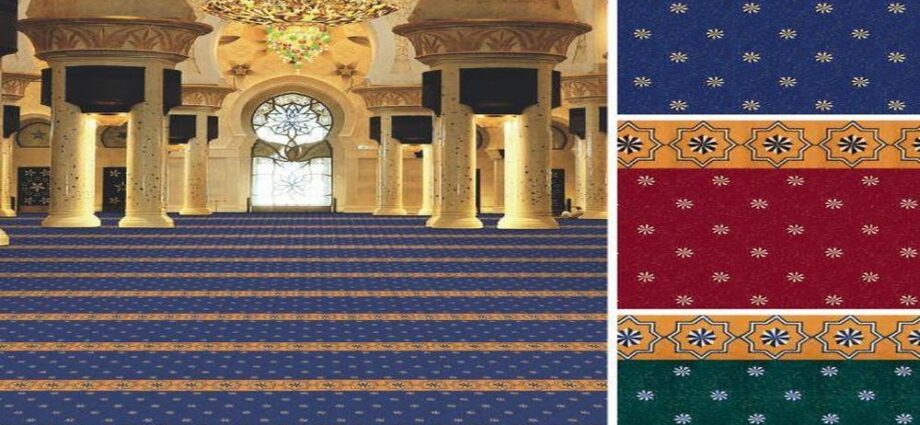Mosque carpets play a significant role in creating a serene and inviting atmosphere for worshippers. Selecting the right raw materials for mosque carpets is crucial to ensure durability, aesthetic appeal, and comfort. Some of the best raw materials for mosque carpets are mentioned below.
Wool: Timeless Elegance and Durability
Wool is a classic choice for mosque carpets due to its exceptional durability and luxurious feel. It is a natural fiber that offers excellent resistance to wear and tear, making it suitable for high-traffic areas. Additionally, wool provides insulation, maintaining a comfortable temperature within the mosque. The inherent strength and natural resilience of wool make it a reliable choice that can withstand heavy use for years.
Silk: Exquisite Beauty and Lustrous Finish
Silk is renowned for its captivating beauty and luxurious texture, making it a prized material for mosque carpets. Its natural sheen adds an elegant touch to the carpet, creating a visually stunning ambiance. Silk carpets are often crafted with intricate designs and patterns, displaying exceptional artistry and craftsmanship. Although silk is delicate and requires careful maintenance, its exceptional aesthetic qualities make it a sought-after choice for special areas within a mosque.
Cotton: Versatility and Affordability
Cotton is a versatile and affordable material commonly used in mosque carpets. It offers a soft and comfortable surface, making it ideal for prayer areas. Cotton carpets are lightweight, easy to clean, and highly breathable, ensuring a fresh and hygienic environment. Furthermore, cotton is available in various colors and patterns, providing ample design options to suit different mosque interiors.
Synthetic Fibers: Practicality and Easy Maintenance
Synthetic fibers such as nylon and polyester have gained popularity in mosque carpet production due to their practicality and affordability. These materials offer excellent stain resistance, durability, and color retention, making them suitable for areas with heavy foot traffic. Synthetic fibers are easy to clean and maintain, providing a cost-effective solution without compromising on quality.
Natural Fibers: Sustainability and Eco-Friendliness
In recent years, there has been an increased emphasis on sustainable and eco-friendly materials. Natural fibers like jute, sisal, or bamboo can be used to create mosque carpets with a lower environmental impact. These fibers are biodegradable and renewable, aligning with the principles of conservation and sustainability. While natural fiber carpets may require additional care, they contribute to a greener and more eco-conscious mosque environment.
Conclusion
When choosing raw materials for mosque carpets, it is essential to consider factors such as durability, aesthetic appeal, comfort, and maintenance requirements. Wool and silk offer timeless elegance and luxurious textures, while cotton provides versatility and affordability. Synthetic fibers bring practicality and easy maintenance to high-traffic areas, while natural fibers align with sustainability goals. By carefully selecting the raw materials, mosque administrators can create carpets that not only enhance the beauty of the space but also provide a comfortable and inviting atmosphere for worshippers.

